Biology 466 Unsolved Problems Fall 2011
Minimization of Energy
I will start with potential energy, before going on to free energy.
If we make a graph of the potential energy of a brick. as a function of the height of the brick, we get a straight line. Every inch of increased height adds a constant amount to its potential energy. The heavier the brick, the steeper the slope of the straight line graph. This is so simple! How can it lead to anything profound?
Next, we make a graph of the potential energy of a metal spring, being stretched longer and longer by some force. This graph will be a curve. That is because the spring pulls back more and more strongly, the greater the length you stretch it. Therefore the slope of the graph gets steeper and steeper, the more the length of the spring.
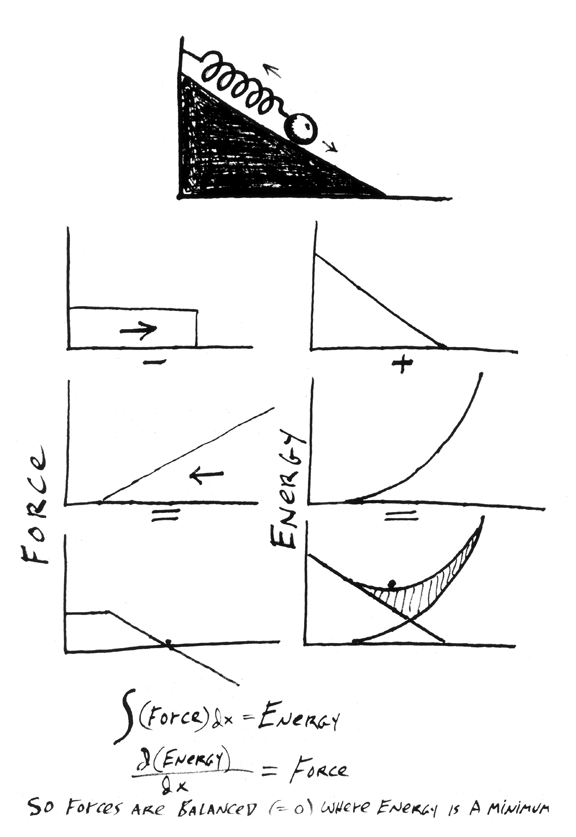
If we had something that resisted elongation less and less as you stretched it, then the graph of its potential energy would also be a curve, but the slope of its curve would become less and less, the longer you stretched this material.
Why think about such graphs of forces as functions of positions of bricks and lengths of springs? Can they help us understand anything important? Wouldn't there be easier ways to make sense of balances between forces? The answer is yes, sometimes. You will soon be able to judge why and when.
To find the answer, make a graph of the sum of the potential energies of a brick hanging by a spring. The weight of the brick stretches the spring longer and longer, until the upward pull of the spring's contraction exactly counter-balances the downward pull of gravity on the brick. Consider the sum of the potential energy of the brick's height plus the potential energy of the spring's length. This sum will be a minimum at the point where the forces are stably counterbalanced. You can visualize bouncing up and down of the brick as if a marble were rolling back and forth in a sort of imaginary valley of potential energy.
Please visualize for yourself how the stable counterbalance would be changed by each of the following situations:
-
a) The brick somehow becomes lighter?
b) The brick becomes heavier? (or more bricks are added?)
c) Gravity becomes stronger? or weaker?
d) The spring pulls more strongly? Or more weakly?
e) Pulling force on the spring becomes so strong that the spring metal yields and gets weak.
f) Someone adds a gas-filled piston to the brick and the spring!? For example, the compression of gas in the piston might help the spring resist the downward pull of the bricks.
g) In addition to all that, someone heats or cools the gas in the cylinder...? (Then visualize the graph of the potential energy) You could use a three dimensional graph, in which downward position of the brick is plotted on the x axis, temperature is plotted on the y axis, and potential energy is plotted on the z axis, like altitude in a range of mountains.
h) Next, imagine that a reversible chemical reaction occurs inside the piston, perhaps in which molecules of one gas split apart and become converted into two molecules of another gas, and an equilibrium exists with a back-reaction, and the equilibrium constant of this gas inter-conversion will probably vary as a function of temperature. What then?
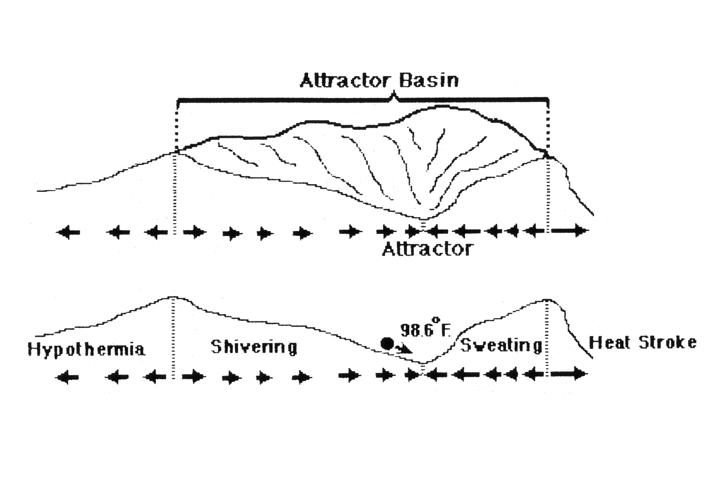
The key idea is to visualize the sum of effects of many counterbalanced forces in terms of the minimization of the sum of the integrals of the forces. An alternative would have been to visualize the forces themselves, and sum them. You could graph forces as functions of brick position or spring length, piston volume, etc. Wherever the sum of the forces turns out to be zero, then forces would be counterbalanced. You could do that. That way of visualizing sums and balances of forces would have the advantage of staying closer to the real causes of force balances.
There are also advantages to adding up the potential energies, instead of the forces themselves. What this amounts to is calculating integrals of the forces. Yes, I mean integrals in the sense of areas under curves, and all that stuff in calculus. But don't worry: we are not going to do any calculations; the ideas are all we need. Think about energies as integrals of forces. Conversely, think about forces as derivatives of energies.
The downward force on a brick equals the derivative of how much its potential energy would change per downward distance, if you let it fall. Notice that this force is also equal to the derivative of how much the potential energy would change per distance if you lifted it. Think of this as sort of a book-keeping gimmick for keeping track of multiple counteracting forces. You take the integral of each force, and add that to the integrals of the other forces. Then whenever you need to know the net force that will exist when the spring is yea long, and there are two bricks, and a certain temperature in the gas in the piston, the derivative of the sum of the integrals is the net force that will be acting in that situation.
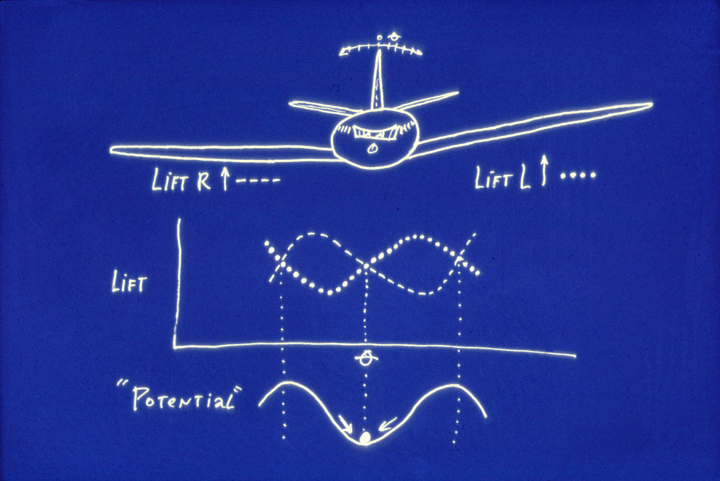
Don't let this worry you. Hardly any biologists understand it, and even fewer make use of these concepts. They don't think of thermodynamic free energy as being a further extension of the potential energy concept, for purposes like predicting what will happen in more complicated situations, like solids melting and different chemical reactions. Most biologists DO like to think of themselves as understanding stuff like this; but few of them even come close. They may never have grasped the idea of adding up integrals of forces, and taking the derivative of the sum of the integrals, and predicting that stability will occur when the derivative of the sum of the integrals (=potential energies) is zero.
More important than these examples is that you should not let people bamboozle you with false claims. Thermodynamics is often used as some sort of weapon. Instead of using facts or logic, some people (e.g. Steinberg, Ingber) claim that their beliefs are proven by some super-intelligent concept that they understand and their critics don't. As a debating tool, this can be very effective. These people often persuade themselves enough to forget they are bluffing. They also develop synergistic collaborations with other bluffers. Some of them employ a fall-back argument about being creatively innovative (even though wrong). Yes, and statues can be carved out of boloney.
The study of self-organizing shapes has been parasitized and held back by such bamboozlers, worse than any other field I know about. The geometric shape of every stable structure has a minimum potential energy: a house, a tree, a rock, a tent, a suspension bridge, a geodesic dome, a blood vessel, a cartilage, a cell, a sea urchin embryo at the 16 cell stage: the shapes of each of these things, including the arrangements and shapes of their component parts, minimize free energy. It sounds magical, or like a breakthrough discovery.
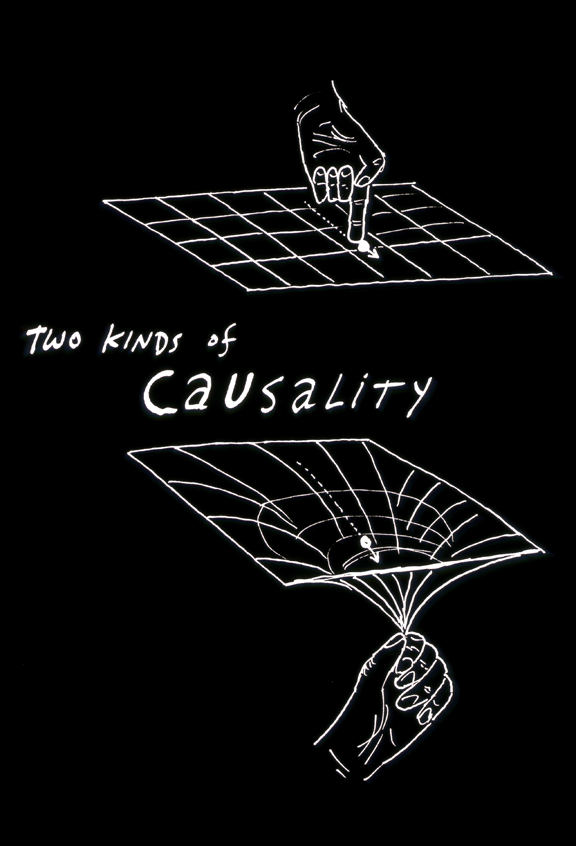
I hope it won't spoil the magic to explain that these same facts can be expressed by saying that forces are stably balanced against each other in all these structures. Oh wow! Can it be true that all the forces in a piece of wood are stably counterbalanced against each other? If not, then whatever forces were not counterbalanced would cause the piece of wood to warp, and become some different shape. The new shape would then have all its forces counterbalanced. The same is true of rocks, bridges, you name it. Except for things that are in the process of spontaneously changing shape (dividing cells, gastrulating embryos, elongating plant stems, erupting volcanoes, thunderstorms, among other exceptions), everything else has stably balanced forces. Get it? Minimum potential energy is another way of saying stable counterbalance of forces. This is not a law of nature, it's a definition. It's one of the main reasons why people invented the concept of potential energy. (It's not the only reason, though. How do you calculate how fast something will go after being dropped such and such a distance, or after being accelerated in such and such an electric field. Integrating forces, and then calculating derivatives of the integrals, is a useful approach.)
Thermodynamics is about how substances will behave in response to various counterbalanced forces. If you take the sums and differences of certain integrals, their derivatives will predict what combinations of properties will develop. It's a very useful approach. You can extend prediction far beyond what intuition can achieve. But it isn't magic. It's an organized way of being smart. Integrate functions; then take derivatives of the integrals, and what do you get?
Early during thermodynamics courses, they teach you that many of the equations won't work if energy is being piped into the system, or out of it. That includes situations in which there is some additional chemical reaction going on, like a motor running. The integrals of some forces can't be calculated, because they don't exist. The force exerted by a diesel engine isn't like the force exerted by a stretched spring, or a hanging weight. It isn't a reversible force, which amounts to saying that it isn't conservative. The force of muscle contraction also isn't conservative. In principle, motors can exist that are reversible in terms of energy; you can generate fuel by running them backwards. Electric motors can be very good generators of electricity. The closer a motor is to being reversible, the more efficient it is in terms of amounts of work done per amount of fuel used. An interesting subject, that we don't need to know about.
Where many people have gone destructively wrong is by concluding that only reversible forces can have stable states of counter-balance. The seed of reality that grows into this mistake is that the energy minimization method for predicting force balance will only work in those cases where all the forces are conservative. That's just a calculation problem. You can't get integrals out of forces that are not conservative. Therefore, you can't use the nifty gimmick of integrating all the forces, summing the integrals, and then taking derivatives of the sum (to get the net force), and finding minima of the integrals as a method of predicting stable force balance.
Whether or not integrals exist has nothing to do with whether forces can be stably counterbalanced. This is a key misunderstanding. A person rowing a boat up a stream, against the pressure of a current that gets stronger and stronger will eventually reach a place where the strength of the person's muscles is exactly balanced by the pressure of the force of the current. Notice that this is a stable counterbalance, in the sense that pushing the boat a little bit upstream or downstream would create an imbalance of forces, and both these imbalances would be back toward the position where balance occurs. But you can't use minimization of potential energy to calculate where the force balance will occur.
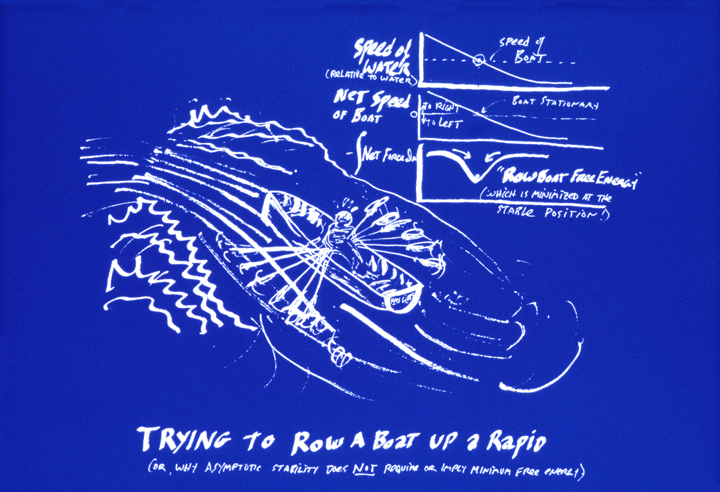
I can't resist another example. Imagine that Superman is rowing a boat upstream toward some kryptonite (which makes him weaker). At some location, Superman's strength will be reduced enough that he can just barely hold steady against the pressure of the current. In this case, what makes the counterbalance stable is the weakening of Superman by the kryptonite, instead of the strengthening of the current.
Stable counterbalance requires that one or more of a set of counterbalanced forces changes its strength depending on whatever variable property you want to be spontaneously created. In the first of the row-boat examples above, the force that changes is the pressure of the flowing river. In the second example, Superman's strength changes. Stability could also be created by having both forces change.
To produce stability,
-
1) the strength of at least one force needs to change so that forces become equal and opposite in one position,
2) but are imbalanced in all nearby positions,
3) with all these imbalances being back toward the position of balance.
For a good example of confusion on this subject, please take a look at the Wikipedia site about "Minimum total potential energy principle".
Although written by intelligent, well meaning people (who deserve more financial donations), this article is a smorgasbord of mistakes. Marbles roll to the bottom of bowls because of the second law of thermodynamics? Unless maybe the reason is that "roll" rhymes with "bowl". That might be the reason! Things happen because the words for the things rhyme: Like catching a fish in a dish! Or receiving a whale in the mail? Horses exert forces. That makes as much sense as some of this article.
Wikipedia also has an article titled "Principle of minimum energy" which (in the cruel words of Wolfgang Pauli) "isn't even wrong". Nobody could ever improve their understanding of anything by reading it.
Multiple people collaborated on each of these articles: intelligent, well meaning people; the same kind of people who honestly believe that cancer is caused by cells growing too fast, and that chemotherapy kills cancer cells by slowing down their growth. Such well-meaning people have a right to be right. That's because site is a homonym for sight. Entropy strikes again!
Wikipedia articles provide an important service, even when wrong. (Maybe even especially when wrong.) They demonstrate easy-to-make misunderstandings about science and history.
Meanwhile, Developmental Biologists do their best to figure out how genes cause the structures of the body. Some people think it must be by something like crystallization. Other people think it's more like surface tension, which they think can only be caused by reversible forces. Quite a few people think it must work like tensegrity, in which forces of tension are exactly balanced against forces of compression.
(Never mind that forces are stably counterbalanced in EVERY structure in the universe, except those currently in the process of spontaneous shape change, like embryos.